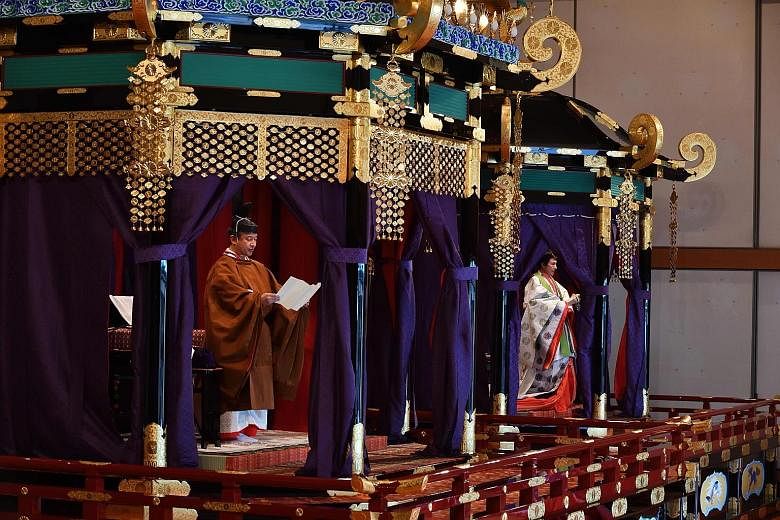Japan's Emperor Naruhito ascended the Chrysanthemum Throne on May 1, ringing in the Reiwa (beautiful harmony) era and becoming the 126th monarch in the world's oldest hereditary imperial bloodline.
His father Akihito, 86 and now the Emperor Emeritus, was the first Japanese monarch to abdicate in about 200 years, under a one-time law.
Emperor Naruhito, 59, was formally enthroned in an august ceremony on Oct 22 that was attended by world royals and leaders.
Why it matters
The Japanese emperor today has an apolitical role - his divinity having been stripped after World War II - but he remains widely revered as a symbol of unity and strength.
A vast majority would bristle at the thought of dismantling the imperial system, which has existed since 660BC.
Overseas, the emperor embodies Japanese soft power as an emblem of peace and stability.
"I sincerely hope our country, through our people's wisdom and unceasing efforts, achieves further development and contributes to the friendship and peace of the international community and the welfare and prosperity of humankind," he said at his October coronation.
He and his wife, Empress Masako, 56, are the first imperial couple to be educated abroad, and experts say they may gradually modernise the throne, given their global outlook.
Emperor Naruhito is also passionate about water conservation, and can lend a voice to environmental causes at a pivotal time with much attention on climate change.
What lies ahead
The Liberal Democratic Party (LDP) government intends to start discussions around next April on how to cope with dwindling numbers in the royal family.
Succession is a big headache: Emperor Naruhito's ascension means there are only three heirs left in the 18-member imperial family, as women are barred from the throne.
They are: the emperor's younger brother Crown Prince Akishino, 54, who also goes by his birth name Fumihito; Akishino's son Hisahito, 13; and the emperor's uncle Prince Hitachi, 84.
Emperor Naruhito's only child, Princess Aiko, 18, is out of the running. Worst still, with only a single branch of the family remaining, the six princesses born into the imperial family are expected to marry commoners and thus lose their royal status.
To address the lack of working-age imperial family members, females may be allowed to continue their official duties after marriage, and even lead imperial family branches, although their children cannot take over the throne.
Opinion polls show that 80 per cent of Japanese are in favour of a female monarch - an idea long dismissed by influential conservatives over fears that it will taint the imperial bloodline.
The LDP is split on the issue.
While some prefer inducting unmarried men from the collateral royal branches that were cut off after the war, the party's second-in-command, Mr Toshihiro Nikai, said last month: "As we bear in mind the equality of men and women and the democratic society, the conclusion is obvious."

